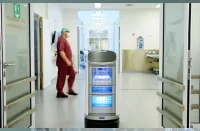Rural and community hospitals serve nearly 15% of the U.S. population, yet only 10% of physicians practice in these areas. Despite their rural settings, these healthcare organisations face the same staffing, security, and budgetary challenges as their urban counterparts. With the costs of electronic health record (EHR) downtime and ransomware attacks escalating, emerging technologies offer promising solutions to help these hospitals manage their unique challenges. As the Chief Medical Officer at Altera Digital Health, Pratt emphasises the potential of cloud computing, containerisation, and automation in transforming healthcare delivery in these under-resourced settings.
Challenges Facing Rural and Community Hospitals
Rural and community hospitals, operating similarly to large health systems but with fewer resources, grapple with unique challenges. Financial stability, particularly as these hospitals serve a higher proportion of Medicare and Medicaid patients, remains a primary concern. Shrinking reimbursements and rising costs due to inflation have further strained these organisations, making the need for innovative solutions more pressing.
Staffing shortages further exacerbate the situation, with rural areas struggling to attract and retain qualified clinical and non-clinical staff. Specialists often prefer urban settings with better resources, and the reliance on costlier contract workers during the pandemic has worsened financial pressures.
Maintaining IT systems is another significant challenge. Short-staffed IT teams face difficulties keeping up with necessary upgrades and managing cybersecurity threats. Smaller organisations are particularly vulnerable to cyberattacks, which can disrupt operations and compromise patient care.
Emerging Technologies to the Rescue
Emerging technologies, such as cloud computing, offer rural and community hospitals innovative ways to address their unique challenges. Cloud-based technologies, while not entirely new, have transformative potential in healthcare. They can significantly reduce the need for extensive on-premises hardware, thereby lowering the total cost of ownership and easing maintenance burdens. This flexibility is particularly crucial for hospitals with limited IT staff, enabling providers to access data anytime, anywhere.
Containerisation is another promising technology. Containers package all necessary software components, ensuring consistency across different environments. This reduces the need for extensive hardware and simplifies IT management, enabling faster updates and minimising downtime. Containers also enhance cybersecurity by isolating breaches, allowing hospitals to contain threats effectively.
Automation, particularly robotic process automation (RPA), can revolutionise administrative tasks. RPA handles repetitive tasks like claims processing and insurance verification, reducing human error and increasing efficiency. On the clinical side, automation tools like virtual scribes and ambient listening devices can streamline documentation, giving providers more time to focus on patient care.
Expected Outcomes from Technology Adoption
Implementing these technologies can yield significant benefits for rural and community hospitals. Cloud-based EHRs are easier to deploy and scale, reducing disruptions and maintaining cash flow. Enhanced cybersecurity and disaster recovery capabilities provided by the cloud ensure continuity of care during incidents.
Containerisation improves IT operations by enabling smaller, more frequent updates without major system overhauls. This accelerates innovation and reduces downtime, helping hospitals avoid costly interruptions. Automation in the revenue cycle minimises errors and speeds up reimbursement, while clinical automation tools alleviate documentation burdens and reduce provider burnout.
Advice for Health IT Leaders
Dr Pratt advises CIOs and health IT leaders to prioritise identifying their organisations' most significant pain points before exploring new technologies. Focusing on where repetitive tasks can be eliminated, costs reduced, and efficiency improved is essential. Engaging with vendors who share a commitment to privacy and security is critical in safeguarding patient data.
Incremental change often proves more effective than radical overhauls, especially in resource-constrained settings. Starting with implementations that promise the most impact and gradually expanding can ensure successful technology adoption. Involving physician champions and providing thorough staff training are crucial for smooth transitions.
Emerging technologies present a lifeline for rural and community hospitals grappling with financial, staffing, and IT challenges. By adopting cloud computing, containerisation, and automation, these hospitals can enhance efficiency, reduce costs, and improve patient care. A strategic, problem-solving approach to technology adoption will empower these vital healthcare providers to thrive in an increasingly complex healthcare landscape.
Source: Healthcare IT News
Image Credit: iStock







